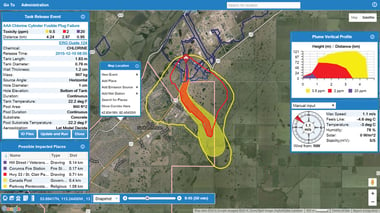In today’s industrial environments, the need for seamless, connected safety systems is more pressing than ever. With new technologies, lean operations, and increasing customer demands, companies are exploring the Industrial Internet of Things (IIoT) and mesh networks to enhance safety and efficiency. One key example is the use of gas detectors connected via mesh networks, offering real-time alerts without requiring heavy IT infrastructure.
What is a Wireless Mesh Network?
Wireless mesh networks use devices, or nodes, to efficiently transmit data by passing it from one node to another until it reaches its destination. Think of it as a classroom where students pass a note from one to another until it reaches the intended recipient. This setup ensures that data can travel across the network effectively.
One of the standout features of mesh networks is their self-healing capability. If one node disconnects, the network can reroute the data through other nodes, ensuring continuous operation.
Traditional networks often rely on a central controller, which can fail and interrupt communication. In contrast, mesh networks use each device as a transmitter, reducing the need for complex setup and infrastructure. This makes them ideal for industrial environments where robust and reliable communication is crucial.

Benefits of Wireless Mesh Networks in Industrial Environments
Devices like the Ventis® Pro5 and Radius® BZ1 provide instant gas readings and share alarms across the network. Hazards detected by one device are immediately shared with all connected workers, enhancing situational awareness and ensuring that everyone is informed of potential dangers.
Panic or man-down alarms notify nearby peers instantly, preventing rescue delays. These alerts are visible to all connected devices without needing a central monitor or laptop, allowing for quicker and more efficient responses to emergencies.
Mesh networks automatically reroute data through other devices if one fails, ensuring continuous communication. This reliability is crucial in maintaining safety and operational efficiency in industrial settings.
Unlike traditional networks that require extensive IT configuration and site surveys, LENS™ Wireless systems work out of the box. This reduces costs and delays associated with traditional network setups, allowing for quicker deployment and easier maintenance.
Why Mesh Networks are Ideal for Gas Detection
Mesh networks extend visibility up to a mile, ensuring that workers are aware of hazards across large industrial sites. This improved coordination can significantly enhance overall site safety.
Devices can also collect and transmit data to cloud-based platforms like iNet®, allowing safety teams to monitor gas exposures remotely. Historical data can reveal trends, helping managers identify hazardous zones and implement preventive measures.
Mesh-enabled gas monitors communicate directly with IIoT platforms, providing a comprehensive view of both environmental and worker safety data. This integration facilitates predictive maintenance by alerting safety managers before equipment failures occur.
Overcoming Resistance to Connected Safety Devices
 Addressing Technology Fears: Workers may initially resist new connected devices due to concerns about reliability or privacy. However, just as we trust smartphones despite their flaws, connected gas monitors offer significant safety benefits that outweigh these concerns.
Addressing Technology Fears: Workers may initially resist new connected devices due to concerns about reliability or privacy. However, just as we trust smartphones despite their flaws, connected gas monitors offer significant safety benefits that outweigh these concerns.
Training for Effective Use of Wireless Networks: Workers must learn to interpret peer alarms and act promptly to prevent accidents. Regular refresher training ensures employees understand the importance of responding to alerts and utilizing the technology effectively.
Demonstrating the Value of Connectivity: Real-time data not only prevents accidents but also helps optimize site performance and productivity. By showcasing these benefits, companies can encourage wider adoption of connected safety devices.
Key Considerations for Deploying Wireless Mesh Networks
- Assess Site-Specific Needs
Identify areas with poor visibility or communication gaps where mesh networks can improve safety. Tailoring the deployment to specific site needs ensures maximum effectiveness. - Select Multi-Connectivity Solutions
Look for devices with LENS™ Wireless, satellite, cellular, or Wi-Fi options to ensure uninterrupted communication. These multi-connectivity solutions provide flexibility and reliability. - Monitor and Optimize Network Performance
Use analytics from connected devices to refine safety protocols and identify areas for improvement. Continuous monitoring and optimization help maintain a high level of safety and operational efficiency.
Wireless Mesh Networks: A Safer, More Connected Future
Wireless mesh networks enhance industrial safety by enabling real-time communication, faster emergency response, and seamless data sharing. These networks eliminate the need for complex IT setups, making it easier to implement connected safety solutions.
Explore how LENS™ Wireless gas detectors can help you build a reliable, industrial wireless mesh network and transform your workplace safety.



